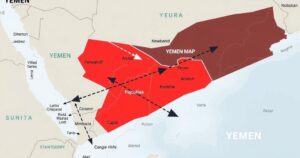Examining the Crisis of Iran and the ‘Axis of Resistance’

The Cultural and Area Studies panel at the Army University examined the crisis of the ‘Axis of Resistance’ amid significant changes in regional dynamics. Key discussions centered on the impact of recent conflicts, shifts in leadership, and the enduring complexities of U.S.-Iran relations. Experts provided insights into how Iran’s influence is adapting to contemporary challenges, while the Iranian populace continues to admire American values despite regime hostilities.
On February 6, 2025, the Army University’s Command and General Staff College Cultural and Area Studies Office conducted a panel titled “Iran and the Axis of Resistance: Declining Power or Evolving Threat?” The session examined the impact of recent events on the crisis facing the ‘Axis of Resistance’, comprised of Iranian-backed militias and political entities. Dr. Mahir J. Ibrahimov, the Director of CASO, emphasized that this discussion is part of a broader examination of challenges faced by the United States and its allies regarding Iran.
The panel featured insights from faculty members regarding cultural, economic, and political elements that have shaped Iran’s regional power and its historical ties with the West. Mark J. Bosse, the Chair of Diplomacy Studies, remarked, “It hasn’t been a good couple of years for Iran and the ‘Axis of Resistance’.” Recent developments, including significant losses among Hamas fighters and leadership, have affected the structure and effectiveness of the Axis.
Hamas leader Yahya Sinwar intended to incite a regional conflict that would unify the Axis and result in Israel’s destruction, yet this ambition has faltered. New leadership in Lebanon and Syria has distanced themselves from Iranian influence, and the Houthis have halted their promised attacks on shipping in the Red Sea. Bosse noted Iran’s historical ability to adapt to crises, maintaining political, economic, and cultural sway in the region.
Dr. Tirdad Daei, a Senior Instructional Specialist at CGSC, provided a unique perspective on U.S.-Iran relations, tracing their evolution from initial ties in 1833 to the present complexities. Daei discussed how the 1953 Operation Ajax and the subsequent Iranian hostage crisis exacerbated tensions, complicating diplomatic relations. He highlighted the ongoing admiration of the Iranian populace for American values, stating, “The divide between Iranian people and the regime is a critical factor in U.S. and Iran relations.”
Gary Hobin, an Assistant Professor, described the ‘Axis of Resistance’ as a loose coalition of militias supported by Iran but pursuing their own interests. He likened it to a chain, with Iran influencing groups in various countries such as Iraq, Syria, and Lebanon. However, the downfall of Syrian President Bashar al-Assad has led to significant shifts in alliances and sentiments within the region.
The panel concluded with a robust Q&A session that elaborated on the implications of the situation in Syria and Turkey. This engagement is part of an ongoing seminar series dedicated to operational and strategic issues relevant to the U.S. The events are streamed live on CGSC’s social platforms and past panels can be accessed on their YouTube channel.
In summary, the Cultural and Area Studies panel provided a comprehensive analysis of the current crisis facing Iran and the ‘Axis of Resistance’. The discussions highlighted the evolving dynamics of U.S.-Iran relations, the challenges posed by recent developments within the Axis, and the historical complexities that underlie these interactions. Understanding these factors is crucial for formulating effective U.S. engagement strategies moving forward.
Original Source: www.army.mil








